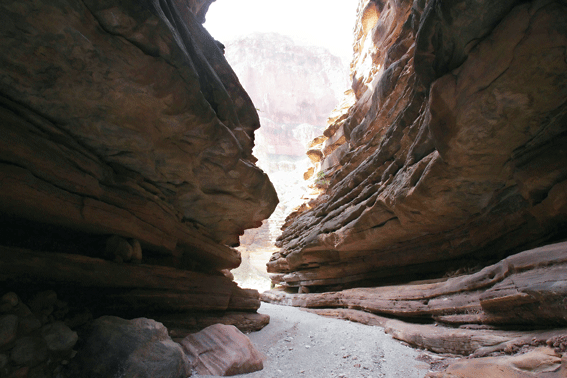
![]() Travel and Adventure
Travel and Adventure
Grand Canyon Gorge Is 9 Times Older Than Thought
New research on the Grand Canyon challenges the long-held belief that the canyon was carved by the mighty Colorado river about 6 million years ago.
By: Hope Hamashige *

Parts of the canyon were formed more than 50 million years earlier than previously thought, according to the new study.
The newfound evidence, presented in the May issue of the Geological Society of America bulletin, shows that part of the canyon known as Upper Granite Gorge formed more than 55 million years ago.
The history of the Grand Canyon is far more complicated than previously believed, according to Rebecca Flowers, a professor at the University of Colorado, boulder and the paper’s lead author.
“What this tells us is that the entire Grand Canyon didn’t suddenly just form 6 million years ago,” Flowers says.
Instead, she explains, the giant chasm may have formed as a series of “ancestral” canyons grew and joined together.
“It is becoming increasingly apparent that the history is more complicated and that different segments developed at different times and subsequently became integrated.”
Scientists have long argued over how the Grand Canyon, arguably one of the best known and most beautiful landscapes on earth, was formed. the most widely held belief was that it was created when geological forces lifted the area and the Colorado river cut down through the resulting plateau.
The canyon’s age had been pegged at about 6 million years based on sediment deposited by the Colorado as it exited the canyon around Lake Mead.
The new study used a different technique, a method of dating rocks developed by geologists at the California Institute of Technology called uranium-thorium-helium dating.
By measuring the amounts of uranium and helium contained in samples collected from the upper granite gorge, the researchers could determine the time at which rocks there cooled, indicating when they were unearthed by erosion.
Because temperatures are hotter below earth’s surface, these cooling rates helps scientists determine when rocks were buried deep underground, and when the forces of erosion exposed them to cooler temperatures closer to the surface.
The results showed that the rocks in Upper Granite Gorge were exposed to cooler temperatures near earth’s surface around 55 million years ago.
It also showed that both the rim and the bottom of the gorge had cooled at the same time, suggesting that the gorge formed from previously existing canyons that eventually connected, rather than a plateau.
“If there had not been a canyon, the gorge and rim samples would have been different,” notes Brian Wernicke, a geology professor at Caltech.
Karl Karlstrom, a geologist at the University of New Mexico, points out that precursor canyons to the Grand Canyon have been proposed before and that the caltech research supports those theories.
“Every time we get a new tool we learn something new,” Karlstrom says. “This is a strong addition of data that helps to document what has been proposed -- that ancestral canyons existed and became linked together.”
Other recent research, including a study by geologists at the University of New Mexico published recently in the journal Science, further challenges the idea that the Grand Canyon was created in one fell swoop by the Colorado.
That research found that parts of the canyon were likely formed about 17 million years ago, adding perhaps more credibility to the notion that the parts of the Grand Canyon were created at different times.
Though there is mounting evidence for the existence of precursor canyons around the Grand Canyon, scientists are still a long way from understanding the full history of how the natural landmark was created.
The new research does not call into question, however, that the Colorado River did, on its present course, start spilling sediment into lake mead 6 million years ago.
“That 6-million-year figure is solid, and they are not disputing that,” says Joel Pederson, a geologist at utah state University who researches the Grand Canyon.
What is not known is how the precursor canyons were linked together and what the exact course of the Colorado river was before it started unloading sediment around Lake Mead, he says.
“There have been so many hypotheses how the Colorado got pieced together and when,” pederson says.
* Hope Hamashige is a regular contributor to National Geographic News.